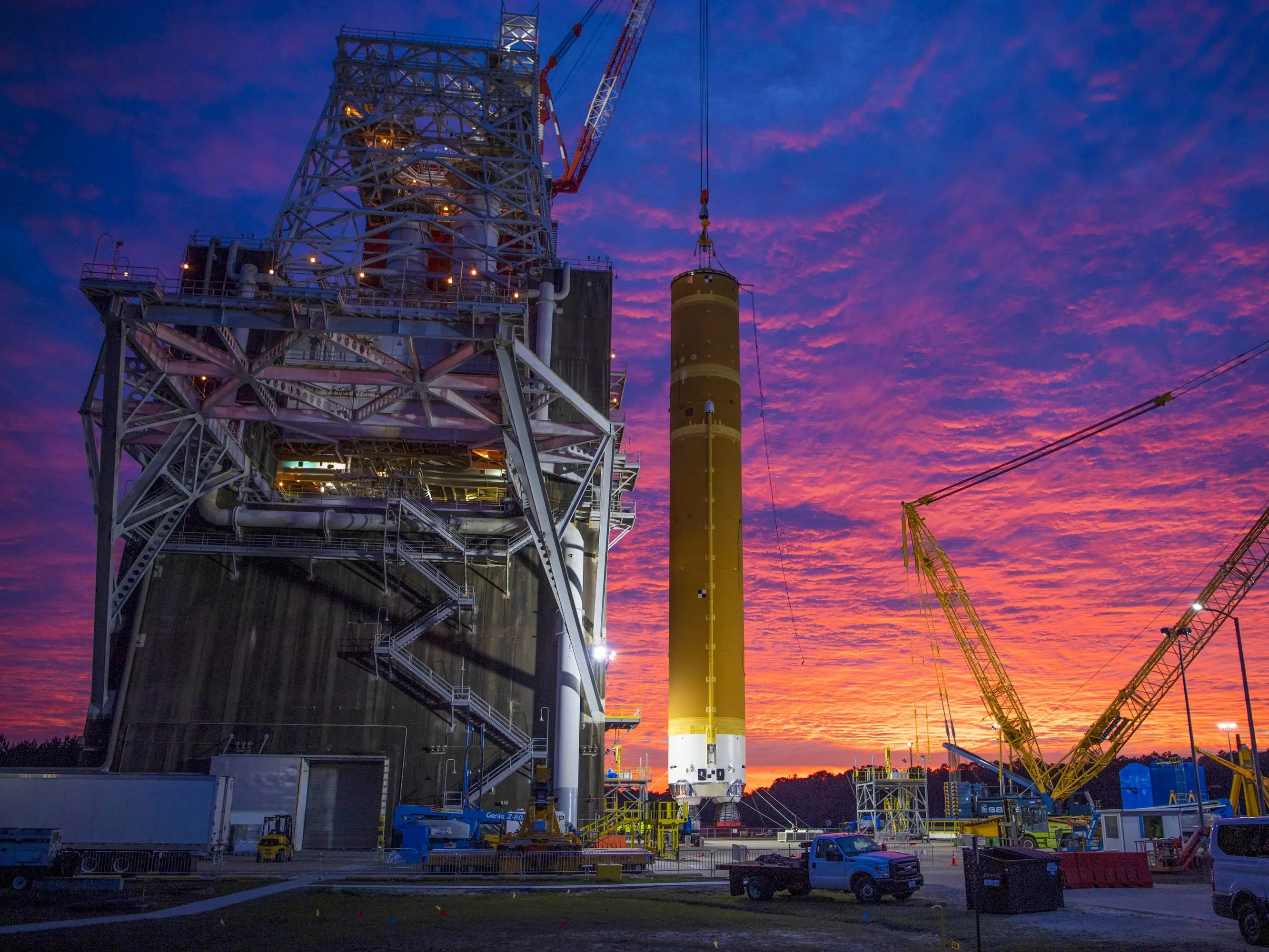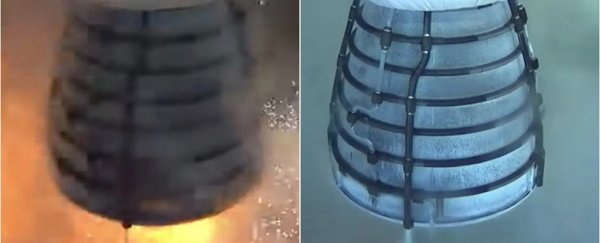NASA's mega-sized moon rocket encountered an engine issue during a critical test on Saturday, and the error could further delay the agency's effort to send astronauts back to the moon.
The rocket, called Space Launch System (SLS), is designed to eventually stand 365 feet (111 meters) and ferry astronauts to the moon sometime in the mid- to late-2020s.
The system is an essential piece of a larger program called Artemis, a roughly $US30 billion effort to put boots back on the lunar surface for the first time since 1972. NASA has spent about US$18 billion developing the rocket.
The SLS core stage - the system's largest piece and its structural backbone - was assembled and heavily strapped down at Stennis Space Centre in Bay St. Louis, Mississippi, on Saturday for a critical "hot fire" test.
For the first time, the rocket was ready to simultaneously fire its four powerful RS-25 engines as it would for launch.
The core stage is the world's largest and most powerful rocket stage, according to NASA. It hosts five mains sections, including a 537,000-gallon (2 million-litre) tank for liquid hydrogen, a 196,000-gallon (742,000-litre) tank for liquid oxygen, four RS-25 engines, avionics computers, and other subsystems.
Boeing is the lead contractor for the stage, and Aerojet Rocketdyne is responsible for its RS-25 engines, which used to help propel NASA's fleet of space shuttles.
The fuel tanks were filled with 733,000 gallons of cryogenically chilled propellant on Saturday, and the engines roared to life at about 5:27 pm EST.
"It was like an earthquake," NASA Administrator Jim Bridenstine told reporters in a press conference after the test.
"It was a magnificent moment. And it just brought joy that after all this time, now we've got a rocket. The only rocket on the face of the planet capable of taking humans to the moon was firing all four RS-25 engines at the same time."
The engines were supposed to fire continuously for eight minutes. But about one minute into the test, the engine controller sent a command to the core-stage controller to shut them down.
 Crews at Stennis Space Centre lift the core stage into place on Jan 22. (NASA)
Crews at Stennis Space Centre lift the core stage into place on Jan 22. (NASA)
Controllers had seen a flash next to the thermal-protection blanket covering engine four. Shortly afterward, that engine registered an MCF, or "major component failure". It's not yet clear what happened.
"At the time that they made the call we did still have four good engines up and running at 109 percent," John Honeycutt, the SLS program manager at NASA's Marshall Space Flight Centre, said in the press conference.
The whole thing was captured on NASA's live broadcast:

"The amount of progress that we've made here today is remarkable. And no, this is not a failure. This is a test. And we tested today in a way that is meaningful, where we're going to learn and we're going to make adjustments and we're going to fly to the moon," Bridenstine said.
The SLS team will spend the next few days poring over data from the test, assessing the core stage and the engines to figure out what happened and how to move forward.
NASA may need to re-do the hot fire test
Saturday's hot fire was supposed to be the eighth and final step in NASA's "Green Run," a program designed to thoroughly test each part of the core stage ahead of SLS's first launch, called Artemis 1 - an uncrewed test flight currently scheduled for November 2021.
But that timeline may be unrealistic now. If the hot fire went well, NASA was planning to ship the rocket to Kennedy Space Centre in Cape Canaveral, Florida in February. There, workers would stack all the segments of the two boosters required for sending Artemis 1 around the moon.
It's unclear how long it will take NASA to correct the engine error and get the core stage to Florida now.
"It depends what the anomaly was and how challenging it's going to be to fix it. And we've got a lot to learn to figure that out," Bridenstine said.
"It very well could be that it's something that's easily fixable and we could feel confident going down to the Cape and staying on schedule. It's also true that we could find a challenge that's going to take more time."
The agency may have to redo the hot fire test. The SLS team wanted to get to at least 250 seconds of the engines firing together to have high confidence in the vehicle. Saturday's test lasted for just over 60 seconds.
It would take at least four or five days to prepare the Stennis Space Centre facilities for another test. If NASA needs to swap the current engines for new ones, workers can do it on-site at the Stennis Space Centre. Honeycutt estimated it would take about seven to 10 days to do that.
"This is why we test," Bridenstine said. "Before we put American astronauts on American rockets, that's when we need it to be perfect."
This article was originally published by Business Insider.
More from Business Insider:
